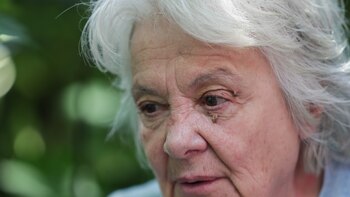“What is your position? How many children are on board? Hello? Hello? Teacher?”. At the rescue center in the north of France, operators respond to requests from immigrants who are in trouble trying to reach the British coast, like thousands in 2021.
The conversation in English is uneven. There are sick children on the boat and the man asks for help. “Where are they? Send me a picture. Do you agree to return to France?” , asks the operator at the French rescue center in Gris-Nez.
Located at the foot of the lighthouse facing the open sea of the Strait of Calais, Cross, the regional surveillance and rescue operations center, finally mobilizes rescuers from Berck-sur-mer (north) to help the ship.
The night is over. Two operators fixed their eyes on a series of screens to keep a close eye on the strait. As a precaution, one tug boat and two patrol ships were mobilized.
On the screen, each ship appears with the detection time, location, description and number of passengers, other information, and whether there is a life jacket.
This information comes from the calls of immigrants, other ships, associations...
The dawn brightens. The fog hides the cliffs of British Dover on the other side of the Strait.Phone calls are increasing and sometimes coming from the same boat. We need to contrast the information.
- “Come with us” -
“What's the problem? Does the engine work? Do you need help?” Questions follow each other.
If a boat is identified on the way, “we make sure that people do not risk their lives,” explains Marc Bonnafous, the head of the cross. Each warning is analyzed in depth for “prioritizing rescue operations.”
Véronique Magnin, spokesperson for the maritime prefecture of the region, pointed out that a secret vessel that was fragile and overloaded was “hard to find”.
Immigrants “know how maritime structures work,” he explains. “Sometimes they call us and tell us they are in trouble, but they want to be escorted to British waters.” Some do so, hoping to secure a 10-hour journey from the beginning.
Like this newcomer who appears in the WhatsApp message of the cross: “Please, we are in the ocean, you need your help, come with us.”
If immigrants do not ask for help, “we do not force,” Magnin said, “We approach and make sure that there are life jackets and that there is a consistent route, and that the boat is well floating.” It is said to “observe” up to the British relay.
- “We are not police” -
On the ground, “The internal security forces are fighting covert immigration. At sea, they can only rescue.” Marc Bonnafous says. For example: “We are not the police, but the SAMU of the sea”, “We have enough shipwrecks to create additional risks.”
Since the first voyage in 2016, the director emphasizes the “industrialization” of the phenomenon with ships “more than 12 meters long and 30 to 50 people on board”. According to London, in 2021, about 29,000 immigrants arrived on the coast of England.
For four years, Bonnafous says, “More than 50,000 immigrants were rescued,” says Bonnafous. However, this dangerous journey took the lives of 38 immigrants in 2021, 27 of whom were on the same shipwreck.
Rescuers do not forget about the tragedy that occurred on November 24. The bishop of the Cross recalls the call of the Maritime Branch. “That's all, something that we were afraid of happened.”
On that day, “There were more than 40 rescue operations on the French side. All calls were recorded and delivered to justice.” He explains that he initiated an investigation into the circumstances of the tragedy.
“We couldn't confirm if the wrecked people called us because they didn't have a phone number, but all the calls we received that day were processed.” He says.
zl/tjc/jvb
Últimas Noticias
Debanhi Escobar: they secured the motel where she was found lifeless in a cistern

The oldest person in the world died at the age of 119

Macabre find in CDMX: they left a body bagged and tied in a taxi
The eagles of America will face Manchester City in a duel of legends. Here are the details

Why is it good to bring dogs out to know the world when they are puppies




